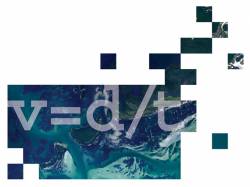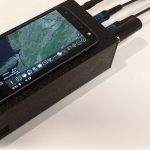
A new satellite-based positioning and timing system now available from partners Iridium and Satelles incorporates layered security elements into a service that offers 20- to 50-meter unaided position accuracy worldwide and could serve as a GNSS backup, according to the companies.
The Satelles Location and Timing (STL) service, also offers microsecond timing accuracy, said Satelles CEO Michael O’Connor — and that can be improved with more advanced receivers.
A new satellite-based positioning and timing system now available from partners Iridium and Satelles incorporates layered security elements into a service that offers 20- to 50-meter unaided position accuracy worldwide and could serve as a GNSS backup, according to the companies.
The Satelles Location and Timing (STL) service, also offers microsecond timing accuracy, said Satelles CEO Michael O’Connor — and that can be improved with more advanced receivers.
"Incorporating a higher quality clock in the user equipment results in higher performance," O’Connor told Inside GNSS. "We’ve even seen, in some cases, better than 100 ns timing accuracy with, for example, the rubidium oscillator."
The reason for the range in position accuracy has to do with the data going into the navigation solution. Instead of using signals from three or four different satellites at once, the Satelles user equipment receives signals from the same low Earth orbit (LEO) spacecraft as it passes overhead.
"An Iridium satellite goes from horizon to horizon in less than eight minutes, and that does two things," said Greg Gutt, the Herndon, Virginia–based company’s president and chief technology officer. "The first is that it provides a very strong Doppler signature, which can be used in the navigation solution. GPS receivers rely significantly less on Doppler because the satellites don’t move very quickly in a typical scenario. With the LEOs, the Doppler signature is quite strong — and that helps.
Secondly, he said, you can use the changing position of the moving satellite to find a position solution.
"If you can imagine the satellite being in four different places over a certain period of time," Gutt told Inside GNSS. "First it’s at one location then it’s at another location and so on. By tying those measurements together over time, we actually get a position fix that way."
It takes two minutes, on average, to get a solution in three dimensions with an accuracy of 50 meters. After 10 minutes the accuracy can be 20 meters or better. That improves when there is more than one satellite in view, which is the case some 70 percent of the time.
"With aiding," said O’Connor, "our performance is as good as 5 m, 1 sigma."
Echoes of TRANSIT
Satelles has "many similarities to the old Navy TRANSIT system, said GNSS expert Ron Hatch, "but there are some strengths and weakness compared to the TRANSIT. "
The primary similarity, Hatch said, is the use of the Doppler shift to determine position.
"Like the TRANSIT system, that makes them sensitive to the user motion, which makes the position computation take longer and the accuracy is usually poorer when the receiver is moving," said Hatch.
On the other hand, he said, "the satellite positions are most likely significantly more accurate than the TRANSIT system positions were — which is good. However, the frequency from the TRANSIT satellites was continuous rather than sampled like Satelles — which is a disadvantage. Satelles also has the benefit of inter-satellite communication links, which can help in monitoring the satellite frequencies."
"Overall," Hatch said in an e-mailed statement to Inside GNSS, "it looks to be of significant benefit particularly for stationary timing applications (usually fixed sites that are not moving) and for getting a position indoors."
O’Connor, acknowledged the challenge for non-stationary users but said the 20- to 50-meter accuracy is achievable for someone in motion if they incorporate an inertial measurement unit (IMU) into their receiver. He also noted that, in additional to Doppler shift, the Satelles system uses time of arrival in their solution.
Hatch pointed out that the Satelles system, at this point, depends upon GPS for its ground-based time standard (primary reference). That could undercut its utility as a backup system for the Global Positioning System.
"That is a weakness," he said, "which makes them dependent upon GPS as currently implemented. They indicate that this can be remedied without too much difficulty."
O’Connor confirmed they has a fix in the works. He said the company planned to integrate independent timing sources into their ground network within the next 12 months.
Timing
Satelles takes a different approach to providing timing, as compared to GPS, relying in large part on the constellation’s satellite crosslinks and Iridium’s ground system.
"They [the satellites] don’t have atomic clocks on board," said Gutt, "they have high quality, non-atomic clocks on board. The way that we turn that system into a PNT [position, navigation and timing] system is that we’re constantly calibrating those clocks, and we’re using the advantage of the fact that Iridium satellites have those cross-links. All the satellites are cross-linked to each other and they’re also doing overpasses over ground infrastructure. Through those two means we’re constantly calibrating those clocks."
The corrections are part of the broadcast from the satellite to the user, said O’Connor, and are applied in the receiver.
"The clocks are good enough for flywheel and for a certain period of time," said Gutt. "That’s how effectively we take non-atomic clocks — because atomic clocks in space are very expensive — and yet still get a good PNT system out of it through calibration."
Iridium will soon be updating its constellation as well. Iridium Next, set to begin launching this year, will have 66 new satellites, plus ground spares. It will provide global coverage, including coverage over the poles, and the same level of Satelles service.
Satelles has control of its own channel in the Iridium system and, like GPS, is a one-way passive broadcast with a potential for an unlimited number of users. Unlike GPS there is a user fee and the ability to deny use of a signal is incorporated into the overall system.
"Our primary business model is integrating the technology and reference designs into our partners’ solutions," said O’Connor. The firm does not offer off-the-shelf receivers.
Potential to Thwart Spoofing
Because the LEO satellites are much closer to the Earth’s surface the signals are 300 to 2,400 times stronger than those provided by GPS, the firm said. That makes them usable indoors or in areas, perhaps under heavy tree cover, where GPS signals are occluded.
The system also includes up to 3,000 localized spot beams that can be used in combination with STL’s encrypted signal in a closed-loop authentication system that can prove where a user is located.
"One of the applications that we’re very interested in is using the STL signal to not just tell you where you are, where a user is, but to prove where a user is," said Gutt. "The fact that we’ve got the 3,000 spot beams that overlap with the cryptographic keys means that our signal is very differently structured than the other GNSS signals and makes it well-suited for that application."
"It seems like they have a basis for some good anti-spoof," said GPS signal security expert Logan Scott. "I don’t have enough information to assess fully if they can do location authentication to the required assurance level — but they seem to be on the right track."
PNT Choices
Having multiple PNT backups is a good thing, said Charles Schue, co-founder, president, and CEO of UrsaNav, which has been supporting a proposal to develop enhanced Loran (eLoran) as a backup for GPS in the United States. Eloran is a ground-based system that uses a high-powered signal in a different frequency band than GPS to provide PNT.
"UrsaNav is a founding member of the RNT [Resilient Navigation and Timing] Foundation and, as such, is very much a believer that resilience depends upon diversity in the PNT ecosystem," he said in an e-mailed response to an Inside GNSS query. "It is a good idea to provide users with multiple options for protecting their PNT within their commercial or government infrastructures."
eLoran, which is in already use in other counties and being tested in the United States, won the backing of the National Executive Committee for Space-Based Positioning, Navigation, and Timing (ExCom) as a near-term alternative to GPS while a full backup is developed. The ground-based system offers a two-dimensional signal with an accuracy of 100 meters unaided and 10 meters with augmentation. It also provides sub–500-nanosecond timing, and better than 100 ns timing with differential. Gutt described the STL service in a May 18 presentation to the advisory board.
"Although eLoran is not 3D, it does provide 2D positioning for aviation," said Schue. "There were about 750,000 General Aviation users of Loran-C, eLoran’s predecessor, in the U.S. when the administration terminated its operation in 2010.” When eLoran is used in concert with a simple altimeter, which is required on aircraft and is now found in many smart phones, a 3D solution becomes readily available, he added.
The eLoran system uses frequencies in the 90–110 KHz band as opposed to the GPS L1 signal that is centered in the at 1575.42 MHz and the L2 signal centered at 1227.60 MHz. Iridium and Satelles also use a different set of frequencies from GPS, operating in the 1616–1626 MHz band.
The Iridium frequencies, however, are close enough to those used by GPS to be facing a similar problem — possible interference from the wireless broadband network proposed by Ligado.
Iridium filed comments with the Federal Communications Commission on May 23 saying that is was working in good faith with Ligado to find a solution but that "grant of the current unaltered Modification Applications — based on Ligado’s proposed operational parameters — would result in significant harmful interference to Iridium’s current and future MSS [mobile satellite services] network."
"We stand by the GNSS and Iridium communities in our concern regarding the possible interference from the proposed Ligado signals," said Gutt. "Satelles is continuing to analyze the possible effects on its signal."






